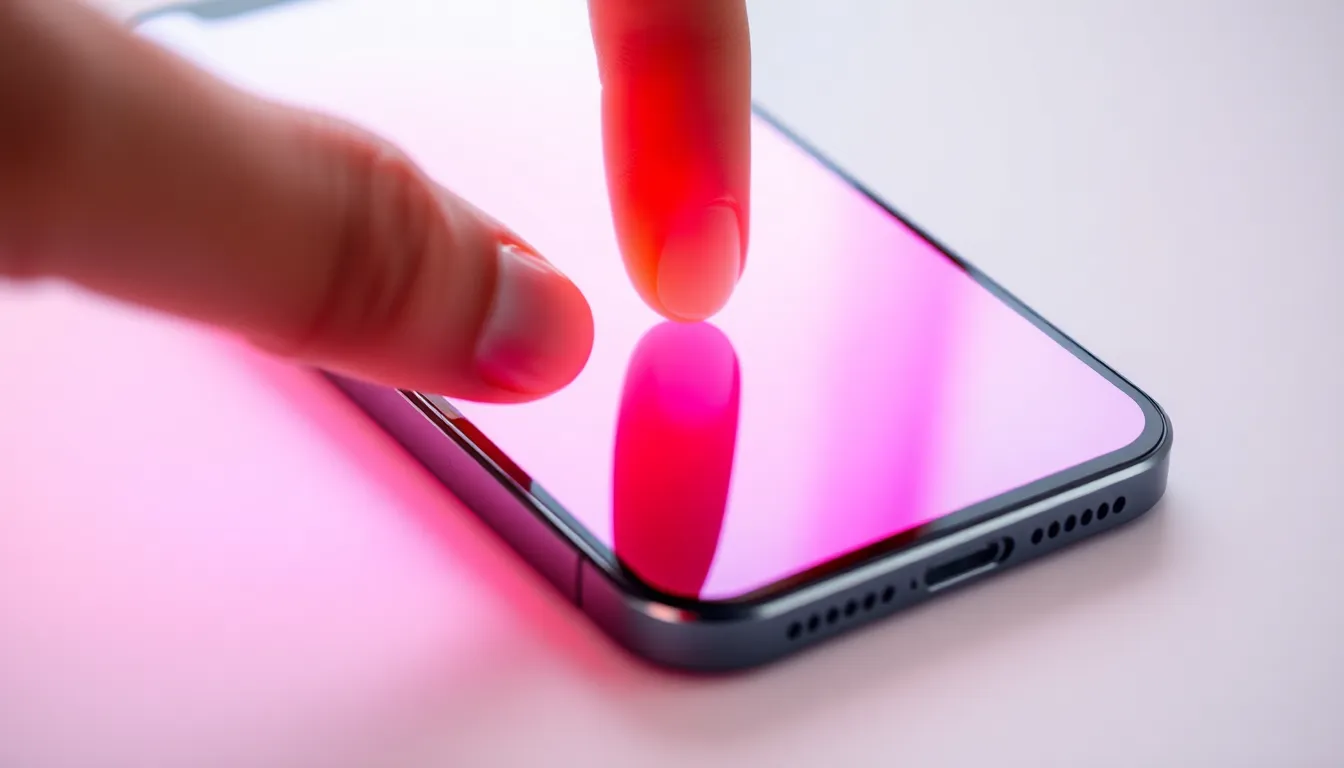Table of Contents
ToggleEver tapped your iPhone 11 screen only to have it act like it’s on a coffee break? Frustrating, right? A misbehaving touchscreen can turn even the simplest tasks into a comedy of errors. Luckily, calibrating that stubborn screen isn’t rocket science. With just a few simple steps, you can have your device responding to your touch like it’s been training for the Olympics.
Understanding Touch Screen Calibration
Touch screen calibration involves adjusting the device’s sensitivity to ensure accurate touch registration. Proper calibration enhances response times and improves user experience on the iPhone 11.
What Is Touch Screen Calibration?
Touch screen calibration refers to the process of aligning the touchscreen’s input with the display’s output. This adjustment allows for precise interaction, ensuring that touches register accurately at intended locations. Calibration helps address issues like misalignment or lag. Users benefit from a more responsive device when calibration is performed correctly.
Why Is It Important for iPhone 11?
Importance of touch screen calibration for the iPhone 11 stems from its reliance on accurate touch responses. A well-calibrated screen enables effective navigation, making tasks seamless. An uncalibrated device may lead to frustrations, such as incorrect app selections or unintended actions. Frequent use of the iPhone 11 justifies regular calibration to maintain optimal touchscreen performance. Improved responsiveness enhances overall satisfaction with the device.
Steps to Calibrate iPhone 11 Touch Screen

Calibrating the iPhone 11 touchscreen involves a few straightforward steps. Following these steps helps ensure accurate touch registration and optimal performance.
Preparing Your Device
First, ensure that the iPhone 11 is charged. A low battery can affect performance during the calibration process. Next, remove any screen protectors or cases that may interfere with touch sensitivity. Clarity matters, so a clean screen enhances accuracy. Turn off any applications that might run in the background, as they can disrupt the calibration.
Calibration Process Overview
Begin by accessing the “Settings” app on the device. Next, scroll down and select “Accessibility,” then tap on “Touch” for touch-related adjustments. Look for “Touch Accommodations” to find settings that might need adjustments. Selecting “Calibrate” for the touchscreen opens up the calibration interface. Users will then follow prompts to complete the calibration successfully.
Finalizing the Calibration
Once calibration prompts finish, test the screen responsiveness. Tap on various icons and apps to verify accurate touch registration. If issues persist, repeat the calibration steps for improved results. Restarting the iPhone 11 post-calibration often enhances responsiveness. Ensure the screen remains clean and protected to maintain long-term effectiveness.
Troubleshooting Common Issues
Touchscreen issues can arise even after calibration. Addressing these problems ensures continued functionality of the iPhone 11.
Touch Screen Not Responding
A touchscreen not responding can cause significant frustration. First, users should verify that the device’s software is updated to the latest version. An outdated operating system might hinder performance. Next, confirming that the screen is clean and free of debris ensures proper touch registration. Removing any screen protectors can also help, as some protectors interfere with touch sensitivity. Restarting the device often resolves temporary glitches. If the issue persists, performing a hard reset can restore responsiveness, usually accomplished by pressing and quickly releasing the volume up button, followed by the volume down button, then holding the side button until the Apple logo appears.
Calibration Not Working Properly
Problems with improper calibration may occur despite following steps correctly. Users should start by confirming they completed the calibration prompts accurately. If the touchscreen remains unresponsive to input, they might try recalibrating the device. Deleting saved settings in “Touch Accommodations” can improve accuracy. Ensuring the device is fully charged will help as low battery levels may affect responsiveness. In rare cases, external factors like environmental conditions or physical damage could cause sensitivity issues. Examining the screen for cracks or imperfections is essential, as damaged screens often lead to erratic behavior during use.
Tips for Maintaining Your Touch Screen
Maintaining the iPhone 11 touch screen ensures optimal performance and longevity. Following key practices helps prevent issues and enhances user experience.
Regular Cleanings
Regular cleanings keep the touch screen responsive and free from smudges. Use a microfiber cloth to gently wipe the screen, removing fingerprints and dust. Avoid harsh chemicals, as they may damage the display. Users should perform cleanings often, especially if the device is exposed to oils or dirt. Establishing a routine helps maintain touch sensitivity and clarity.
Avoiding Common Damage
Avoiding common damage significantly extends the lifespan of the touch screen. Using a high-quality screen protector minimizes the risk of scratches and cracks. Keeping the iPhone 11 in a secure case prevents accidental drops that could harm the device. Users should store the device in safe places, especially when not in use. Regularly checking for physical damage allows for timely repairs, ensuring lasting functionality.
Calibrating the iPhone 11 touchscreen can significantly enhance its responsiveness and accuracy. By following the outlined steps users can ensure a smoother navigation experience and prevent frustrating misalignments. Regular calibration along with proper maintenance will keep the touchscreen functioning optimally.
Users should also remain vigilant about potential issues that may arise even after calibration. Keeping the device updated and maintaining a clean screen are essential practices. By taking these proactive measures users can enjoy a seamless interaction with their iPhone 11 for years to come.





